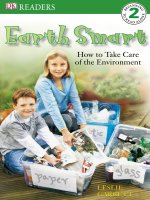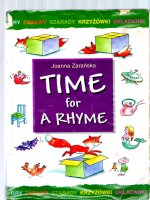nursery rhyme readers humpty dumpty
Bạn đang xem bản rút gọn của tài liệu. Xem và tải ngay bản đầy đủ của tài liệu tại đây (7.93 MB, 14 trang )
Humpty,
Du mpty
Illustrated by Carolina Farías
No part of this publication may be reproduced in whole or in part or stored in a retrieval system, or transmitted in any
form or by any means, electronic, mechanical, photocopying, recording, or otherwise, without written permission of the
publisher. For information regarding permission, write to Scholastic Inc., 557 Broadway, New York, NY 10012.
Designed by Jaime Lucero
ISBN: 978-0-545-26720-5
Copyright © 2010 by Scholastic Inc.
All rights reserved. Published by Scholastic Inc.
12 11 10 9 8 7 6 5 4 3 2 1 10 11 12 13 14 15/0
N
u
r
s
e
r
y
R
h
y
m
e
N
u
r
s
e
r
y
R
h
y
m
e
READERSREADERS
Nursery Rhyme Readers: Humpty, Dumpty © Scholastic Teaching Resouces
2
Humpty Dumpty
Nursery Rhyme Readers: Humpty, Dumpty © Scholastic Teaching Resouces
3
sat on a wall.
Nursery Rhyme Readers: Humpty, Dumpty © Scholastic Teaching Resouces
4
Humpty Dumpty
Nursery Rhyme Readers: Humpty, Dumpty © Scholastic Teaching Resouces
5
had a great fall.
Nursery Rhyme Readers: Humpty, Dumpty © Scholastic Teaching Resouces
6
All the King’s horses
Nursery Rhyme Readers: Humpty, Dumpty © Scholastic Teaching Resouces
7
and all the King’s men
Nursery Rhyme Readers: Humpty, Dumpty © Scholastic Teaching Resouces
8
could not put Humpty
together again.
Nursery Rhyme Readers: Humpty, Dumpty © Scholastic Teaching Resouces
6
Teaching Tips
To enhance children’s reading experiences, use these tips
as you introduce and share the Nursery Rhyme Readers.
Before Reading
Show the cover of the book and read aloud the title.
Have children comment on the cover illustration and
tell what they know about the nursery rhyme. Since
nursery rhymes often contain unfamiliar vocabulary,
skim the book and introduce any vocabulary that will help
children’s understanding of the story. For example, for Little
Miss Muffet, discuss tuffet, curds, and whey.
During Reading
The first time through, read the nursery rhyme aloud from beginning to end to let children hear the
rhyme, enjoy it, and get a feel for the language. On subsequent readings, help engage children in the
reading process by following these suggestions.
L
Model reading for children by tracking a line of print from left to right, turning the pages, and
using picture clues. Invite children to comment on the illustrations on each page.
L
Reread the story, asking children to listen for words that rhyme. Then read aloud again, this time
stopping at words that rhyme and letting children chime in on them. Next, invite children to join
in for a shared reading, pointing to each word as you read it.
L
Model strategies for decoding words, such as finding beginning sounds, using picture clues, and
sounding out words.
L
Point out punctuation and capital letters. Discuss what symbols such as periods,
commas, questions marks, and exclamation marks mean, and how they affect the
reading of the rhyme.
L
Invite children to clap their hands along with you to the rhythm of the rhyme as
you read aloud.
After Reading
Help children respond to the nursery rhyme by following these suggestions.
L
Ask questions to check for understanding. For example, after reading
Humpty Dumpty, ask questions such as: What happened to Humpty when he
fell? Who tried to help Humpty after he fell? Why couldn’t the king’s horses and
men put Humpty back together?
Nursery Rhyme Readers Teaching Guide © Scholastic Teaching Resources
7
L
Ask children if they liked the rhyme, and what they liked most or least.
Have them retell the rhyme in their own words.
Using the Reproducible Nursery Rhyme Pages
After reading a nursery rhyme several times, give children a copy of the nursery
rhyme reproducible to use for independent reading, for reading in pairs or groups,
for classroom activities, and for sharing with
family members. These pages are a great way to
encourage repeated readings, develop fluency, and
to do specific skill work.
Have children make a folder of the nursery
rhyme pages. Provide a blank folder for children to
title “My Nursery Rhymes,” and let them decorate
it. Have them insert the nursery rhymes as they read
them. They can also keep the Nursery Rhyme
Reader Log in the folder, as well as activity
sheets that they complete. Let children take
home the folder to share with family members
from time to time.
Have children follow along as you read
the rhyme, tracking the print as you read. Ask them to underline or circle
the rhyming words on their sheet. Also use the pages to have children
identify specific letters, words with specific consonants, blends, vowel
patterns, phonograms, and sight words. (You might wish to enlarge one copy
of the rhyme and place it on an easel for children to see.)
Some of the lesson pages have specific suggestions for using the reproducible
versions of the nursery rhymes.
Using the Lesson Pages and Reproducible
Activity Pages
For each Nursery Rhyme Reader, use the activities on the lesson page found in
this teaching guide to delve further into the areas of phonemic awareness, phonics,
comprehension, vocabulary, reading, and writing. Each nursery rhyme includes a
reproducible activity page specific to it. Spread the lesson and activities for each
rhyme over several days.
Nursery Rhymes Readers Teaching Guide •
© 2010 Scholastic • 26
Mary Had a
Little Lamb
Mary had a little lamb
with fleece as white as snow.
And everywhere that Mary went,
the lamb was sure to go.
He followed her to school
one day,
which was against the rule.
It made the children laugh and
play to see a lamb at school.
Nursery Rhymes Readers Teaching Guide •
© 2010 Scholastic • 42
Name ___________________________________________________________
Mary Had a Little Lamb
Write Your Own Story!
Mary’s lamb followed her
__________________________________________
_____________________________________________________________________________
.
What happened?
_____________________________________________________
_____________________________________________________________________________
.
to soccer
practice.
It got the ball and
butted it into the goal.
Jack
Nursery Rhyme Readers Teaching Guide © Scholastic Teaching Resources
Nursery Rhyme Readers Teaching Guide •
© 2010 Scholastic • 10
Humpty
Dumpty
Humpty Dumpty
sat on a wall.
Humpty Dumpty
had a great fall.
All the King’s horses
and all the King’s men
could not put Humpty
together again.
11
Humpty Dumpty
Learning With the Nursery Rhyme
See pages 6–7 for suggested ways to read and share the book with children. Then focus on the
following activities.
A New Name for Humpty Dumpty Say aloud the word Humpty in parts: /h/…umpty. Have
children blend the word. Have children blend the word Dumpty the same way. Tell children that the
words rhyme because they sound the same at the end. They both end with umpty. Show children how
you can make another word that rhymes by changing the first sound—for example, you can change
/d/ to /b/ and make Bumpty. Invite children to say Humpty Bumpty. Then ask them to change Humpty
Dumpty’s name again by changing the first sound in Bumpty, for example, Humpty Mumpty. Children
can also make up new names that rhyme, such as Higgy Piggy, Lucky Bucky, or Hacky Packy. Make a list of
these silly rhyming names and have children recite the nursery rhyme with the new names.
Short /a/ Wordplay Say aloud the following words from the rhyme: sat, put, had. Ask children:
Which two words have the same middle sound? Orally segment the words so that children can listen for the
short /a/ sound in sat and had: (/s/ /a/ /t/, /h/ /a/ /d/) Then, reread the rhyme slowly, asking children
to find another word with the short /a/ sound (and). Play a game in which you slowly recite a list of
one-syllable words and children cheer “Yay!” when they hear the short /a/ sound.
All in the Family Write the word family –all on the chalkboard or on chart paper. Say:
“The letters a-l-l make the /all/ sound.” Distribute the reproducible version of the nursery
rhyme. Have children find and circle the words with this pattern (wall, fall, All, all) and
then generate a list of other words that rhyme. Copy, cut out, and distribute the broken egg
templates on page 34. Instruct children to complete the eggs by writing an onset (beginning
sound) and rime (vowel and letters that follow) on each half of the egg for words in the –all
family, such as ball, call, hall, mall, and tall. Have children take apart the eggs and then put them
back together, reading the words. Use the eggs for other word families as well.
It’s a Story! Create a graphic organizer on chart paper by drawing a large egg shape and
dividing it into three horizontal sections. Label the sections “Beginning,” “Middle,” and
“Ending.” Read the label of each section, explaining that stories have these three parts. Invite
children to complete the organizer by retelling the events in their own words. Prompt them
with the questions below.
What happened at the beginning? (Humpty Dumpty was sitting on a wall.)
What happened next? (Humpty fell off the wall and broke.)
What happened at the end? (The king’s horses and men tried to fix him but they couldn’t.)
Now focus on the ending. Say: “Poor Humpty! He’s still broken!” Ask children to help Humpty by
creating new endings to the story that would solve Humpty’s problem.
Punctuation Pointer Explain the use of the apostrophe in the word King’s. Have children replace
horses and men in the text with other things that could belong to the king.
b
all
Nursery Rhyme Readers Teaching Guide © Scholastic Teaching Resources
Nursery Rhymes Readers Teaching Guide •
© 2010 Scholastic • 34
Humpty Dumpty, All in the Family









